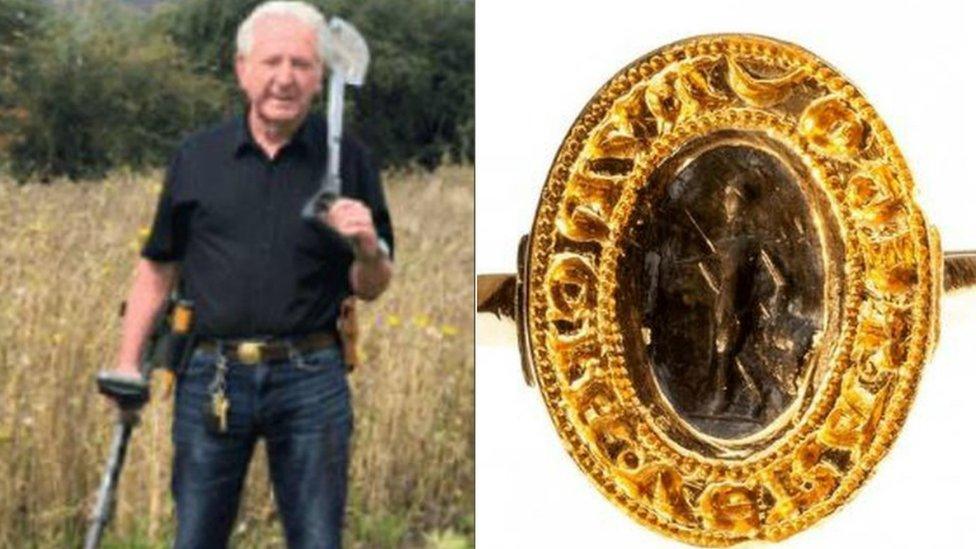Roman coins find in Buckinghamshire declared treasure
- Published
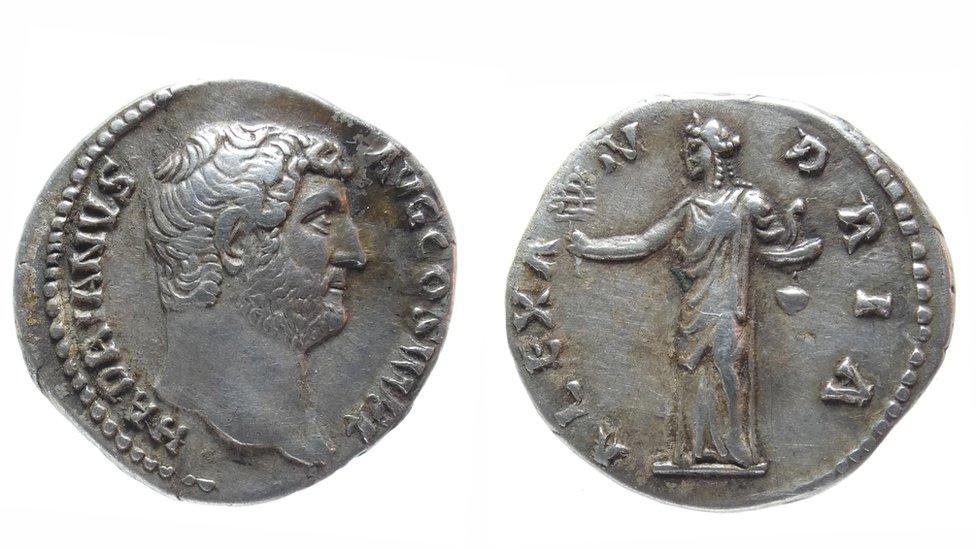
The detectorist had permission from the land owners when he located the Roman coin hoard
Roman coins found by a metal detectorist have been declared treasure.
The seven coins, which were found near Mursley in Buckinghamshire, date back to around the 2nd Century.
The oldest coin in the hoard, found in February 2022, was dated between AD 77 and 78.
The find joins more than 6,000 roman coins the British Museum has recorded as being found in Buckinghamshire.
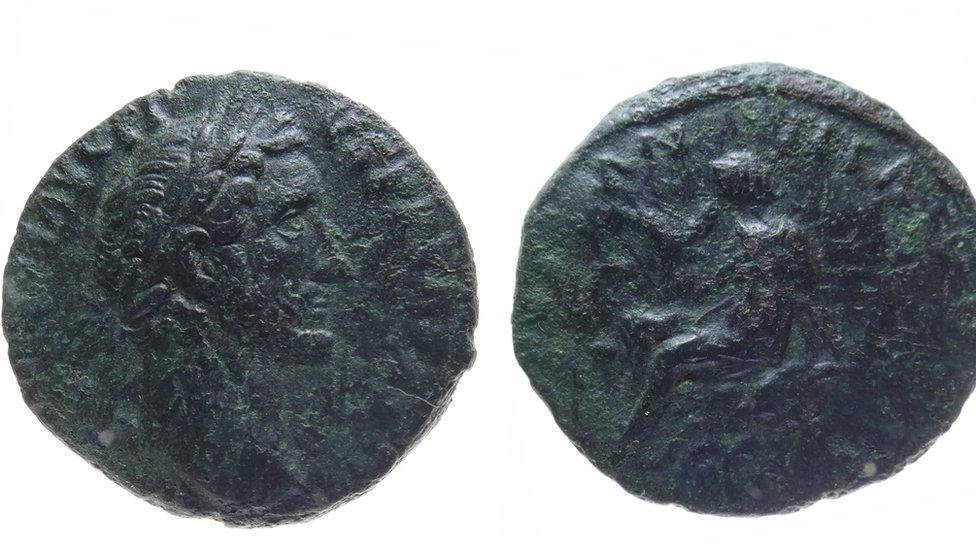
Dr Eleanor Ghey said the coins were "typical of the sort of coins that would still be in circulation in the mid 2nd Century AD"
Assistant coroner Alison McCormick, of Beaconsfield Coroner's Court, concluded the hoard met criteria of being treasure under Treasure Act.
The find contained three silver Denari and four copper alloy coins.

Metal detecting and the law
No search can begin until permission has been given by the landowner
All finds belong to the landowner
Any find in England, Wales and Northern Ireland that is more than 300 years old, made of gold or silver, or found with gold or silver artefacts, could be treasure under the 1996 Treasure Act, external
These must be reported to the appropriate county finds liaison officer, external
Source: Portable Antiquities Scheme

Dr Eleanor Ghey, curator of Iron Age and Roman coin hoards at the British Musuem, said finds like this helped "understand the bigger picture of Roman occupation on a national and local level".
Three of the coins, made from silver, were well preserved, indicating they might not have been in circulation long before being buried.

Follow East of England news on Facebook, external, Instagram, external and Twitter, external. Got a story? Email eastofenglandnews@bbc.co.uk, external or WhatsApp us on 0800 169 1830
Related topics
- Published5 February 2023
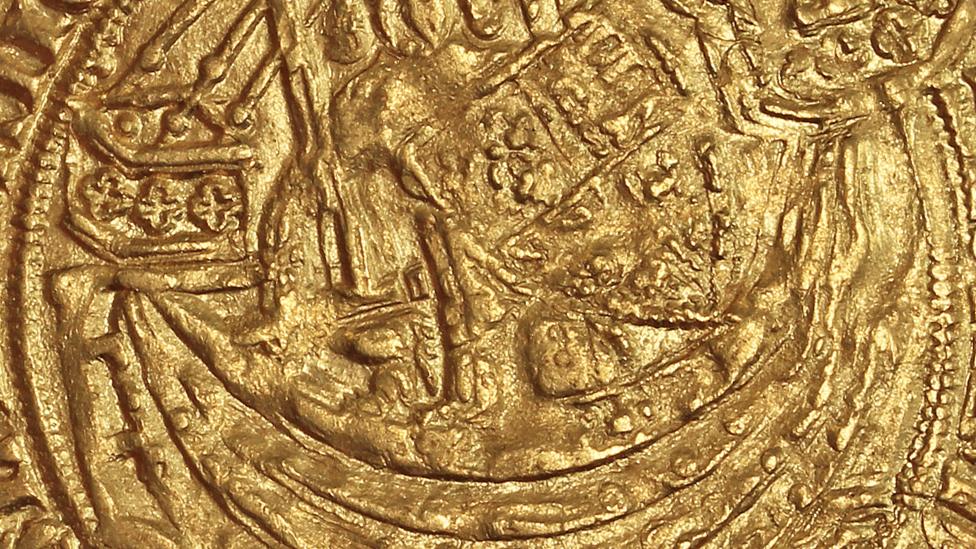
- Published2 January 2015
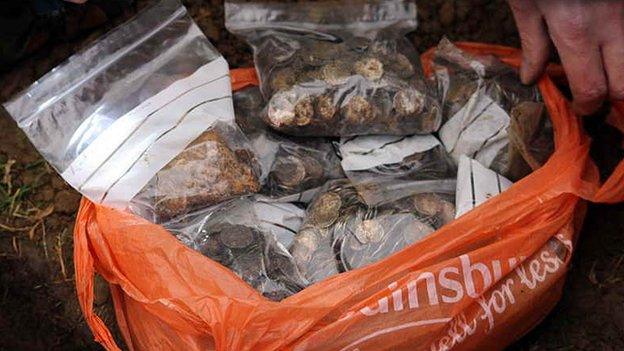
- Published24 August 2019
